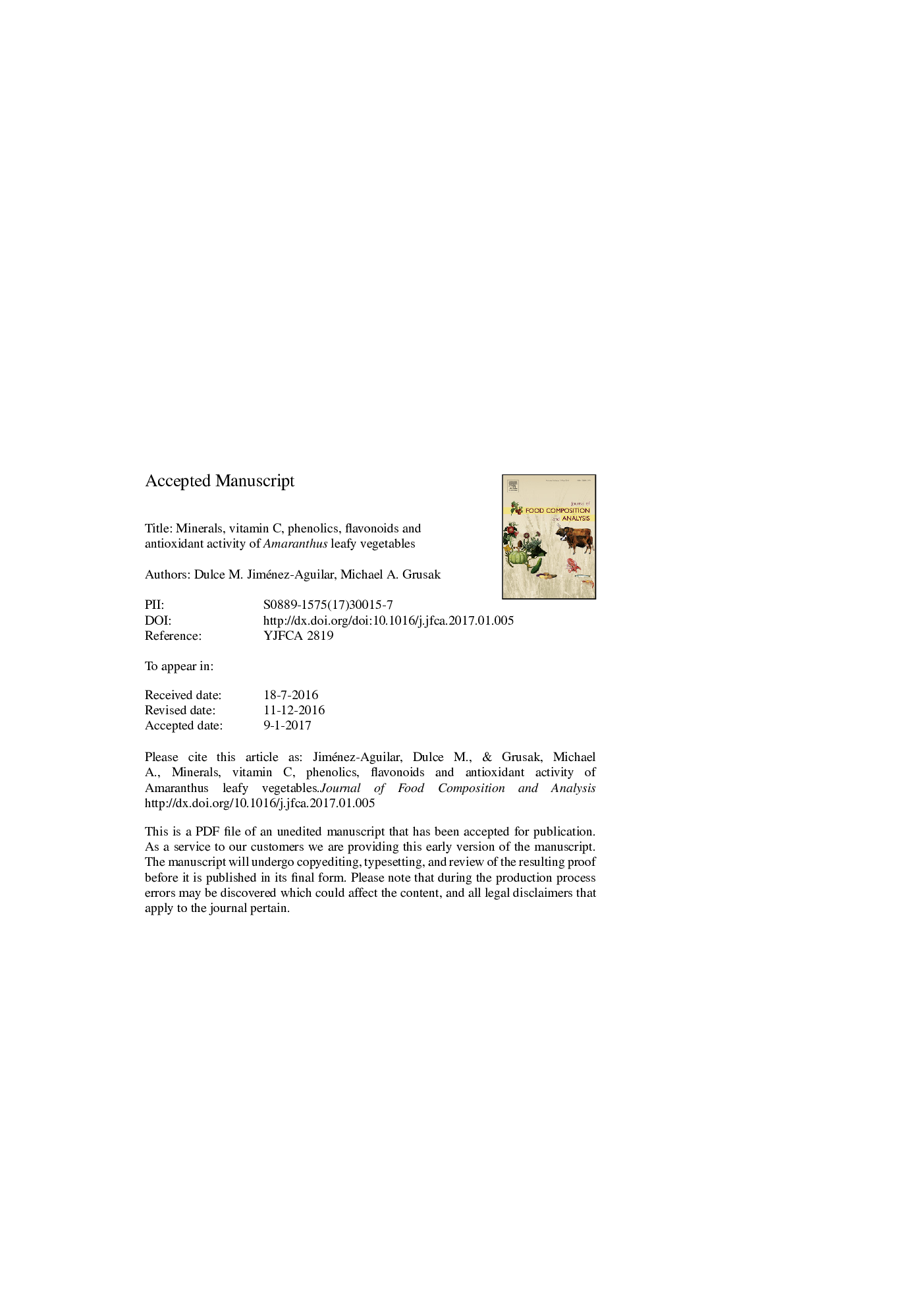| Article ID | Journal | Published Year | Pages | File Type |
|---|---|---|---|---|
| 5136927 | Journal of Food Composition and Analysis | 2017 | 20 Pages |
Abstract
The objective of this study was to evaluate mineral, vitamin C, phenolic and flavonoid concentrations and antioxidant activity levels in 15 leafy Amaranthus species. Across species, the concentration ranges of Ca, K, Mg, P and phenolics, and activity ranges of antioxidants in amaranth leaves were 1.5-3.5 mg/g, 5.5-8.8 mg/g, 1.8-4.5 mg/g, 0.5-0.9 mg/g, 3.2-5.5 mg gallic acid equivalents/g, and 38-90 μmol Trolox equivalents/g (all values on a fresh weight [FW] basis), respectively. Amaranthus acanthochiton had the highest concentrations of Ca, Mg, Ni, Zn, and A. deflexus and A. viridis had the highest concentrations of Fe. A serving of any of the Amaranthus leaves (1 cup; 30 g FW) would contribute from 13 to 34% of the daily value (DV) of Mg (DV = 400 mg; as established by the US Food and Drug Administration), and up to 68% of the DV of vitamin C (DV = 60 mg). In addition, A. acanthochiton would be considered a good source of Ca, Mn and Mo (10%-19% of the DV), and an excellent source of Mg and vitamin C (20% or more of the DV). Amaranth leafy vegetables should be promoted as a dietary source of essential nutrients and health-beneficial compounds.
Keywords
ICP-OESTCAAAPHU.S. FDAGAE2,2′-azobis(2-methylpropionamidine) dihydrochlorideUS Food and Drug AdministrationDaily ValueInductively coupled plasma optical emission spectroscopyl-ascorbic acidtrichloroacetic acidgallic acid equivalentsTrolox EquivalentsLeafy vegetablesAntioxidant activityFlavonoidsPhenolicscatechin equivalentsfresh weightvitamin CMinerals
Related Topics
Physical Sciences and Engineering
Chemistry
Analytical Chemistry
Authors
Dulce M. Jiménez-Aguilar, Michael A. Grusak,
